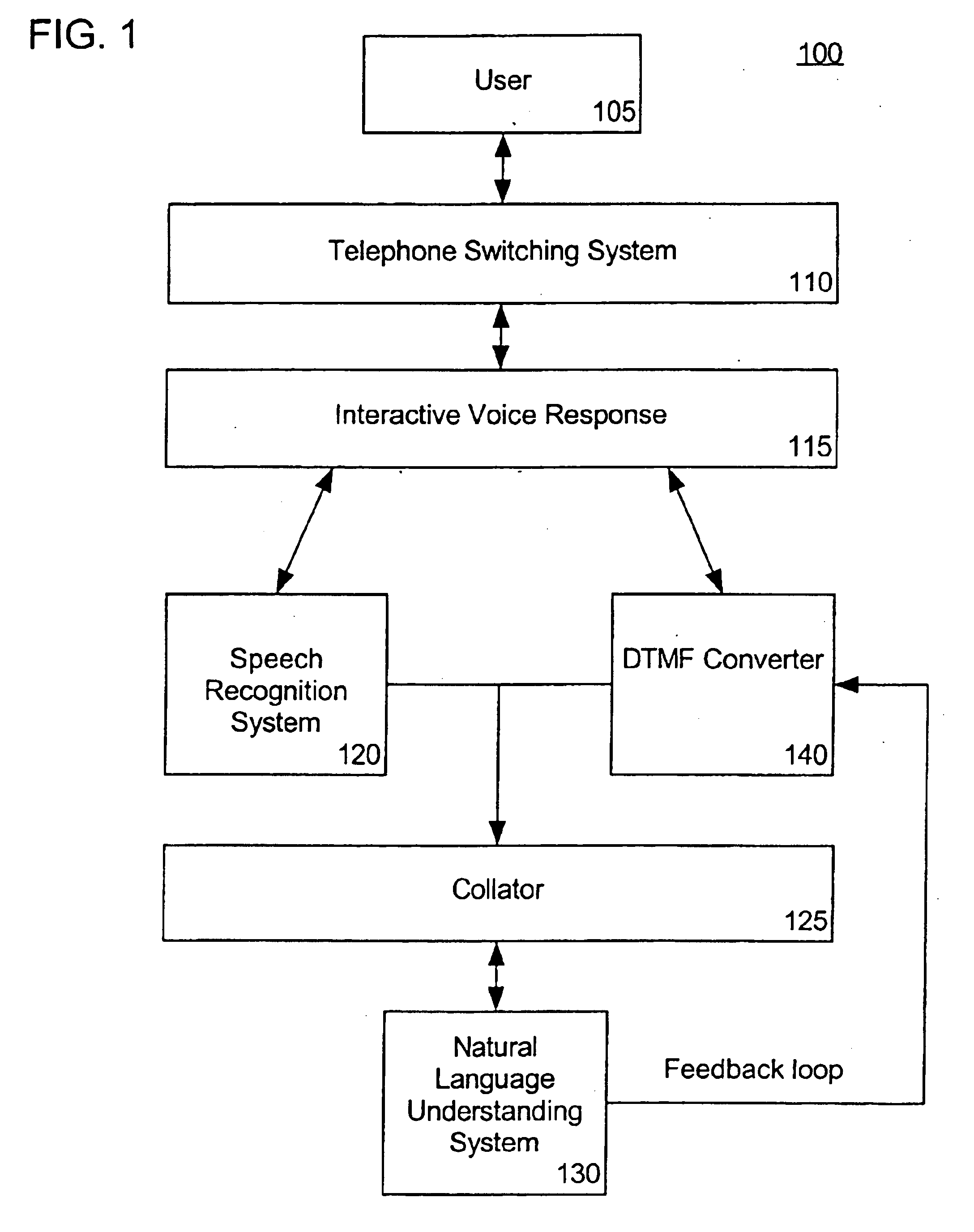Processing dual tone multi-frequency signals for use with a natural language understanding system
a natural language and multi-frequency signal technology, applied in the field of natural language understanding, can solve the problems of i.e., parsing input text and classing that text, and implementing a conversational nlu system in this manner, and avoiding the pre-processing sub-system responsible for meaning extraction, etc., to achieve the effect of prohibitively complex and complex, and avoiding the pre-processing sub-
- Summary
- Abstract
- Description
- Claims
- Application Information
AI Technical Summary
Benefits of technology
Problems solved by technology
Method used
Image
Examples
Embodiment Construction
The invention disclosed herein concerns a method for processing dual tone multi-frequency (DTMF) signals for use with a natural language understanding (NLU) system. DTMF signals consist of two tones having specific frequencies. These signals can be produced and sent to a telephone switch when a touch key on a telephone is pressed. The first tone is produced from a high pitched group of tones, and the second tone is produced from a group of tones lower in pitch. Consequently, because a DTMF signal is comprised of two distinct tones, a DTMF signal is distinguishable from a human voice and speech.
According to one embodiment of the invention, DTMF signals can be distinguished from signals originating from a human voice. Once the signal is identified as a DTMF signal or a human voice signal, the invention can process the signal and properly route the signal. Specifically, if the signal is identified as a human voice, the signal can be provided to a speech recognition system for convertin...
PUM
 Login to View More
Login to View More Abstract
Description
Claims
Application Information
 Login to View More
Login to View More - R&D
- Intellectual Property
- Life Sciences
- Materials
- Tech Scout
- Unparalleled Data Quality
- Higher Quality Content
- 60% Fewer Hallucinations
Browse by: Latest US Patents, China's latest patents, Technical Efficacy Thesaurus, Application Domain, Technology Topic, Popular Technical Reports.
© 2025 PatSnap. All rights reserved.Legal|Privacy policy|Modern Slavery Act Transparency Statement|Sitemap|About US| Contact US: help@patsnap.com



